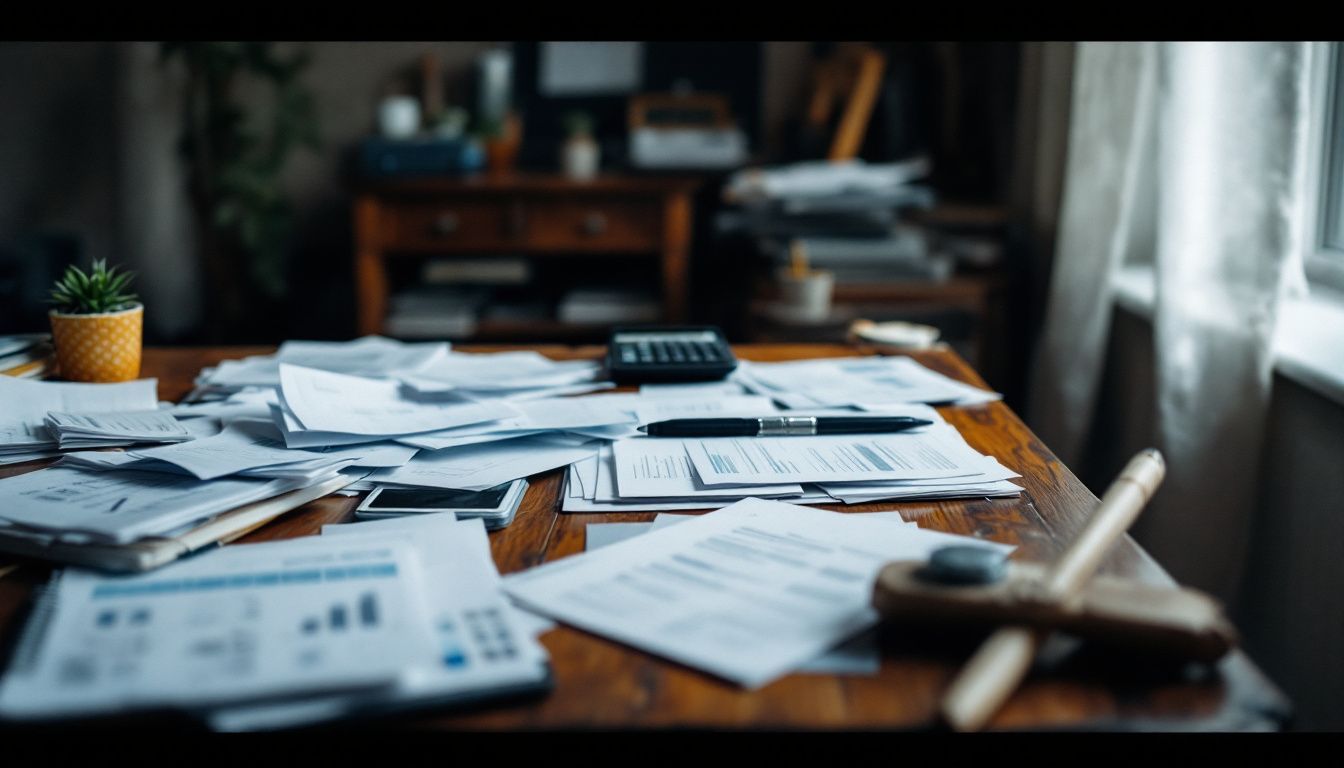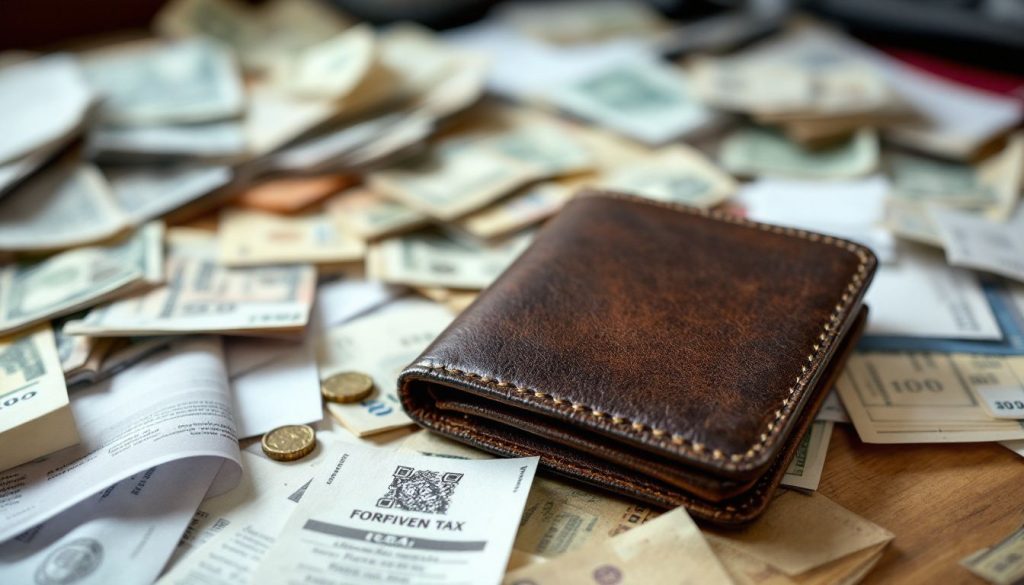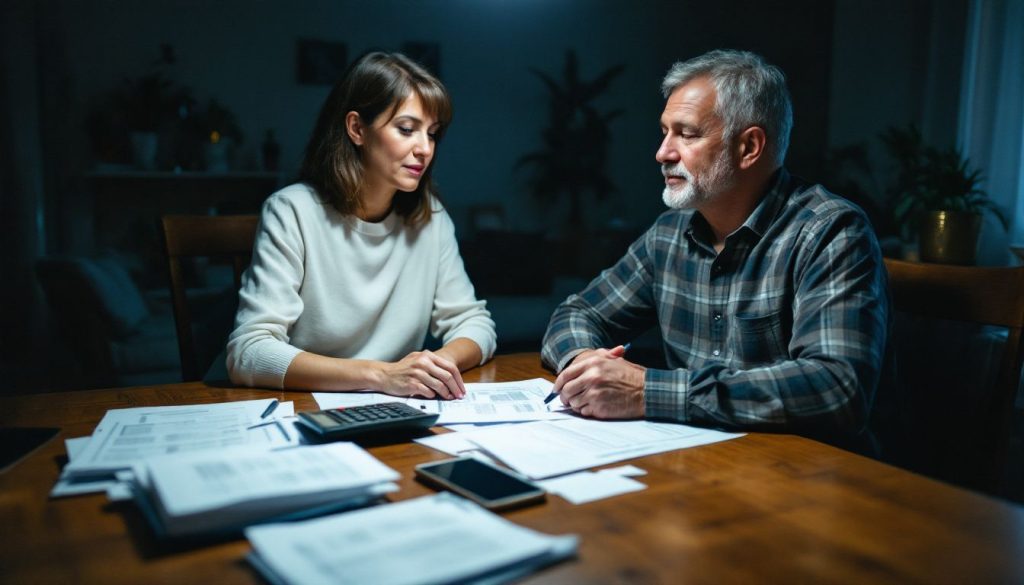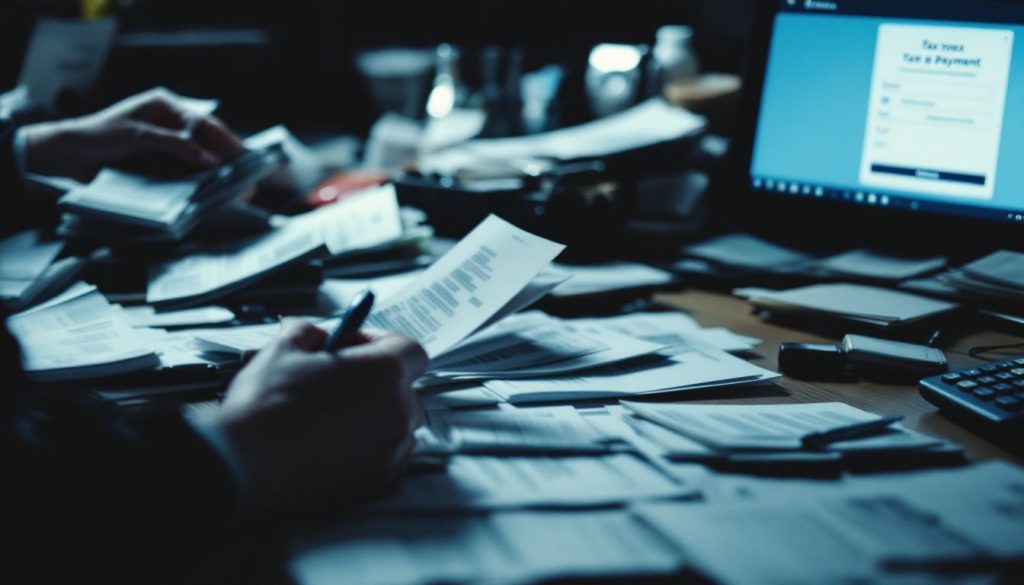Many people in Canada find themselves owing money to the CRA. The good news is, there are ways to solve this problem. This blog will talk about options for cra resolving debt and getting back on track.
Keep reading to learn more!
Key Takeaways
- CRA collects many debts like income tax, GST, and COVID benefits. If not paid, they can take serious actions.
- You can solve CRA debt by setting up a payment plan or asking for help from a licensed insolvency trustee.
- Acting fast is important to avoid more penalties and interest. Talking to the CRA can offer solutions like deferring payments.
- Free resources and programs are available to help manage your debt with the CRA.
- Keeping good records and staying informed about your debt status helps you get back on track.
Understanding CRA Debt Collection
The Canada Revenue Agency (CRA) collects different types of tax debts. If you do not pay these debts, there can be serious consequences, like wage garnishment or seizure of your assets.
Types of debt collected by the CRA
Tax debts can come in different forms. The Canada Revenue Agency (CRA) collects several types of debts from taxpayers.
- Income Tax Debt: This is the most common type. If you owe money from your income tax return, the CRA will collect it. You may face penalties for late payment.
- Goods and Services Tax (GST) Debt: Businesses must pay GST collected from customers. If a business fails to remit this tax, the CRA can pursue the owner for payment.
- Payroll Deductions: Employers must withhold taxes from employees’ paychecks. If an employer does not send this money to the CRA, they are responsible for this debt.
- COVID Benefit Repayment: Some taxpayers received benefits during the pandemic, like CERB or CRB. If these payments were not eligible or too high, repayment may be required.
- Interest and Penalties: In addition to your original debt, interest and penalties can pile up if you do not pay on time. The CRA may waive some of these charges under certain conditions.
- Tax Refunds Applied to Debt: Taxpayers can ask to have their refunds directed toward their outstanding debt with the CRA instead of receiving cash back.
- Garnishment of Wages: If you ignore your debt, the CRA may garnish your wages directly from your paycheck until the debt is cleared.
- Asset Seizure for Unpaid Taxes: For severe cases, the CRA can seize assets such as bank accounts or property to satisfy a tax debt owed by a taxpayer.
These are important points about what kind of debts are collected by the CRA. Next, let’s look at how to resolve these debts effectively.
Consequences of not paying your debt
Not paying your debt to the Canada Revenue Agency (CRA) can lead to serious problems. The CRA may start a debt recovery process. This can include garnishing your wages or seizing your assets.
These actions happen if debts remain unpaid for too long. Taxpayers face penalties and interest charges as well. This makes it harder to pay off the original amount owed.
Many Canadians struggle with tax debt, especially after COVID benefits. Failing to address these matters early increases stress and financial burden. Options exist for those who owe money to CRA but feel unable to pay right away.
The CRA offers payment arrangements that allow you to settle debts over time, giving some breathing room during tough times.
Options for Resolving CRA Debt
There are several ways to deal with CRA debt. You can set up a payment plan or ask for a deferral to ease your burden.
Arrange a payment plan
Taxpayers can arrange a payment plan with the CRA. This option helps to pay off tax debt over time.
- Contact the CRA: First, reach out to the Canada Revenue Agency. You can call their telephone line to discuss your situation and options. A representative will guide you through what you need to do.
- Set Up a Payment Arrangement: You can arrange to pay your debt in smaller amounts each month. This makes it easier to manage your payments without overwhelming your budget.
- Provide Financial Information: The CRA may ask for details about your finances. Be ready to share information about your income, expenses, and any assets you own.
- Interest and Penalties: Understand that interest and penalties might still apply while you make payments. However, the CRA may consider waiving some penalties if you show good faith in making payments.
- Stick to Your Plan: Once you set up a plan, keep up with your payments as agreed. Missing payments may lead to further actions by the CRA, such as garnishment of wages or asset seizure for unpaid taxes.
- Check for Updates: It’s wise to stay informed about your account status with the CRA. Regularly review any notices or letters they send regarding your debt repayment options and current balance.
- Reassess Your Situation: If things change, like losing a job or other financial issues arise, contact the CRA again. They may offer more flexible payment arrangements based on new circumstances.
- Apply Tax Refunds Toward Debt: If you’re due a tax refund, you can request that it applies directly to your outstanding debt with the CRA instead of receiving cash back.
- Consider Debt Negotiation: In some cases, negotiating a settlement with CRA might be possible if debts become unmanageable.
- Seek Professional Help: If you’re unsure how to proceed, consulting with a licensed insolvency trustee could provide valuable assistance in setting up repayment plans for tax debt or exploring other solutions for resolving tax debt effectively.
Consult with a licensed insolvency trustee
A licensed insolvency trustee can help with CRA debt. These professionals understand tax debt resolution. They know the rules and options available to you. Consulting with a licensed insolvency trustee may help you plan for paying your debts over time.
Trustees can assist in making payment arrangements with the CRA. They might also provide advice on COVID benefit repayment options and other financial matters. Their guidance can make dealing with Canada Revenue Agency debt less stressful.
If needed, they can explain how to apply for debt forgiveness too.
Request a payment deferral
Taxpayers in Canada can request a payment deferral if they cannot pay their CRA debt right away. This option allows you to delay your payments for a set time. The CRA may consider this based on your situation.
They understand that some taxpayers face challenges, especially after the COVID-19 pandemic.
The CRA may also help by applying your tax refunds to any outstanding debt. Contacting them directly can lead to better options for managing your payments. Quick action is key and keeps communication open with the CRA about your financial needs.
Free Resources for Dealing with CRA Debt
Free resources can help you manage your CRA debt. You can find government programs and services that offer support and guidance for taxpayers in need.
Government programs and services
The Canada Revenue Agency (CRA) provides several government programs and services to help taxpayers resolve their debt. Taxpayers can apply for tax debt assistance, which may include options like payment arrangements.
You can also request to have your tax refunds applied to your outstanding debt with the CRA.
Some programs aim to offer tax relief for those struggling financially. The CRA may consider canceling or waiving penalties and interest if you show that you cannot pay. Seeking help from a licensed insolvency trustee is another option that allows taxpayers to explore various solutions, including possible debt forgiveness applications.
Licensed insolvency trustee consultations
Government programs and services can help with CRA debt. Another option is to consult a licensed insolvency trustee. These professionals specialize in managing debt. They can explain your choices clearly.
A licensed insolvency trustee helps taxpayers understand their options for resolving tax debts. They know the rules about CRA payment arrangements and debt negotiation with CRA. This expert can guide you if you owe money to the CRA and cannot pay it all at once.
Meeting with a trustee is an important step if financial issues feel overwhelming. You may even discover other solutions, such as possible CRA debt forgiveness or information on DIY bankruptcy options.
DIY bankruptcy options
DIY bankruptcy options can help Canadians manage their debt with the CRA. Taxpayers have choices to address their tax debt. For example, you can file for personal bankruptcy on your own if you meet certain conditions.
Using DIY methods saves money. You avoid fees from professional services. However, be aware of the rules and paperwork involved in filing for bankruptcy. It’s essential to understand the impacts of this choice on your credit score and future finances.
Remember, managing your debt well is important to reach your financial goals and stay out of trouble with the CRA Canada Revenue Agency.
How to Stay on Top of Your CRA Debt
5. How to Stay on Top of Your CRA Debt: Act fast to manage your CRA debt. Pay what you can, and keep in touch with the CRA. This helps avoid bigger problems later on. For more tips and resources, read further!
Importance of acting quickly
Acting quickly is vital for Canadians facing debt with the CRA. The longer you wait, the bigger your problems can get. Tax debts usually grow due to penalties and interest. If ignored, the CRA may start garnishment or asset seizure.
You could lose your income or belongings if you don’t address unpaid taxes soon.
The CRA offers options like payment plans to help taxpayers manage their debts. A quick call to them can open doors to better solutions. It’s important to talk about what you owe and find tax debt resolution options that work for you.
Taking action now can lead to a fair way of resolving debt and avoid harsh consequences in the future.
Tips for staying current on payments
Staying current on payments helps you manage CRA debt effectively. It reduces stress and keeps your finances in check. Here are some tips:
- Set Up Automatic Payments: Arrange for automatic payments through your bank. This way, you won’t miss any due dates and can avoid penalties.
- Create a Budget: Make a monthly budget. Include your CRA payment as a regular expense. This helps you plan ahead.
- Communicate with CRA: If you face challenges, call the CRA. Discuss your situation and ask about payment plans or other options.
- Use Tax Refunds Wisely: Apply your tax refunds to any outstanding debt with the CRA. This can help reduce what you owe faster.
- Prioritize Your Debts: Focus on paying off debts that carry higher interest first if applicable. This strategy saves money over time.
- Stay Updated on Changes: Keep an eye on any changes in CRA policies or available relief options related to COVID benefits or other circumstances.
- Consult Debt Management Services: If needed, talk to a licensed insolvency trustee for advice. They can help set up a plan that works for you.
- Track Your Progress: Regularly check how much you’ve paid down on your debt with the CRA. Celebrate small wins to stay motivated.
- Keep Records: Hold onto all documents regarding payments made to the CRA. Good records help avoid misunderstandings later.
- Act Quickly During Hard Times: If financial trouble arises, don’t delay acting on it. Early action increases the chances of finding suitable solutions like payment deferrals or arrangements with the CRA.
These simple steps make it easier to manage your obligations and keep communication open with the CRA as needed.
Communication with the CRA
Contacting the Canada Revenue Agency (CRA) is a key step in resolving your debt. You can call their telephone line to discuss your situation and explore payment options. Taxpayers can ask about setting up a CRA payment plan to pay off debts over time.
The CRA may also apply your tax refunds directly to any outstanding balances.
It’s important to keep communication open with the CRA. They want to help you resolve your debts fairly. If you can’t afford payments, inform them right away. Under certain circumstances, they may cancel or waive penalties and interest on your debt.
Taking action quickly can lead to better solutions for managing tax debt related to COVID benefits or other issues.
FAQs
1. What are some options for taxpayers to resolve debt with the CRA?
Taxpayers have several options to resolve debt with the CRA, including setting up payment plans or seeking a tax debt settlement.
2. What is the penalty from CRA for unpaid taxes?
The CRA imposes penalties on unpaid taxes which can increase your overall debt and make it harder to pay off.
3. How does resolving debt related to COVID benefits work?
If you owe money due to COVID benefits, you should contact the CRA promptly as they may offer specific solutions for this type of situation.
4. What can happen if I owe money to the CRA and don’t pay?
Owing money to the CRA can lead to serious consequences such as garnishment of wages or asset seizure as part of their debt recovery processes.









